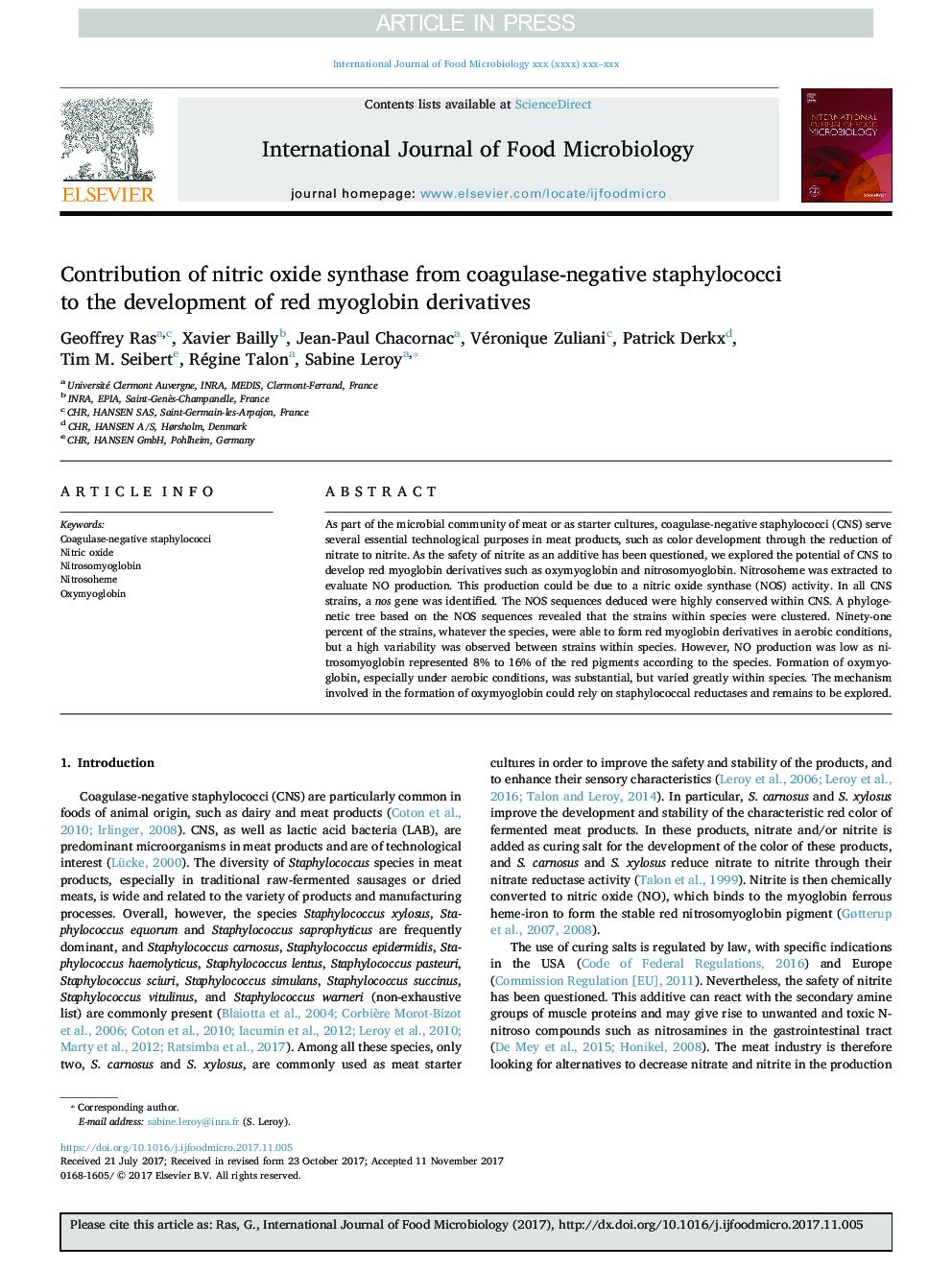| Article ID | Journal | Published Year | Pages | File Type |
|---|---|---|---|---|
| 8844340 | International Journal of Food Microbiology | 2018 | 7 Pages |
Abstract
As part of the microbial community of meat or as starter cultures, coagulase-negative staphylococci (CNS) serve several essential technological purposes in meat products, such as color development through the reduction of nitrate to nitrite. As the safety of nitrite as an additive has been questioned, we explored the potential of CNS to develop red myoglobin derivatives such as oxymyoglobin and nitrosomyoglobin. Nitrosoheme was extracted to evaluate NO production. This production could be due to a nitric oxide synthase (NOS) activity. In all CNS strains, a nos gene was identified. The NOS sequences deduced were highly conserved within CNS. A phylogenetic tree based on the NOS sequences revealed that the strains within species were clustered. Ninety-one percent of the strains, whatever the species, were able to form red myoglobin derivatives in aerobic conditions, but a high variability was observed between strains within species. However, NO production was low as nitrosomyoglobin represented 8% to 16% of the red pigments according to the species. Formation of oxymyoglobin, especially under aerobic conditions, was substantial, but varied greatly within species. The mechanism involved in the formation of oxymyoglobin could rely on staphylococcal reductases and remains to be explored.
Related Topics
Life Sciences
Agricultural and Biological Sciences
Food Science
Authors
Geoffrey Ras, Xavier Bailly, Jean-Paul Chacornac, Véronique Zuliani, Patrick Derkx, Tim M. Seibert, Régine Talon, Sabine Leroy,
